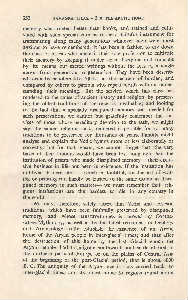Page 571 - Lokmanya Tilak Samagra (khand 2)
P. 571
352 SAMAGRA TILAK - 2 • THE ARCTIC HOME
memory was trusted better than books, and trained and culti-
vated with such special care as to be a faithful instrument for
transmitting along many generations whatever men were most
anxious to have remembered. It has been a fashion to cry down
the class of priests who make it their sole profession to cultivate
their memory by keeping it under strict discipline and transmit
by its means our sacred writings without the loss of a single
accent from generation to generation. They have been describ-
ed, even by scholars like Yaska, as the carriers of burden, and
compared by others to parrots who repeat words without under-
standing their meaning. But the service, which this class has
rendered to the cause of ancient history and religion by preserv-
ing the oldest traditions of the race, is invaluable; and looking
to the fact that a specially disciplined memory was needed for
such preservation, we cannot but gratefully remember the ser-
vices of those whose hereditary devotion to the task, we might
say, the sacred religious task, rendered it possible for so many
traditions to be preserved for thousands of years. Pandits might
analyse and explain the Vedic hymns more or less elaborately or
correctly; but for that reason, we cannot forget that the very
basis of their labours would have been lost long ago, had the
institution of priests who made disciplined memory their exclu-
sive business in life not been in existence. If the institution has
out-lived its necessity, - which is doubtful, for the art of writ-
ing or printing can hardly be trusted to the same extent as disci-
plined memory in such matters- we must remember that reli-
gious institutions are the hardest to die in any country in
the world
We may, therefore, safely assert that Vedic and Avestic
traditions, which have been faithfully preserved by disciplined
memory, and whose trustworthiness is proved by Compa-
rative Mythology, as well as by the latest researches in Geology
and Archreology, fully establish the existence of an Arctic
home of the Aryan people in inter-glacial times; and that after
the destruction of this home by the last Glacial epoch the
Aryan people had to , migrate southwards and settle at first in
the northern parts of Europe or on the plains of Central Asia
at the beginning of the post-Glacial period, that is about 8000
B. C. The antiquity of the Aryan race is thus carried back to
inter-glacial times, and its oldest home to regions round about

